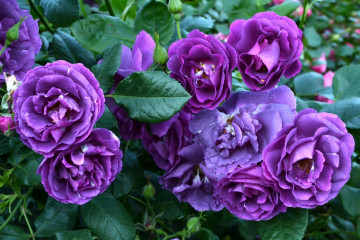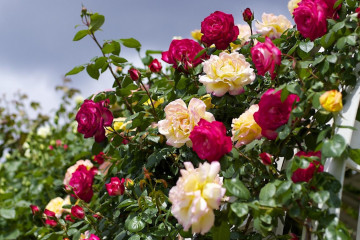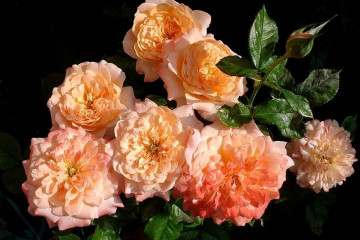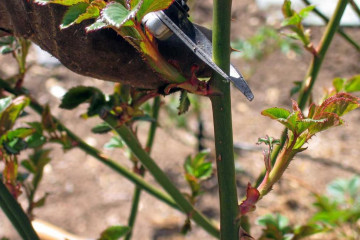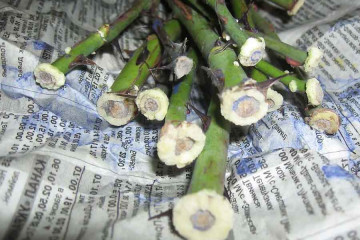Ground cover roses - what are they, varieties
Content:
Rose deservedly bears the honorary title of the queen of flowers. Gardeners all over the world appreciate this culture for the beauty and pleasant aroma of inflorescences. Among the variety of species, ground cover roses are distinguished into a separate group. This variety is distinguished by the creeping shape of the shoots and high unpretentiousness. There are some rules and considerations for caring for ground cover crops that you need to know to grow successfully.
Description and characteristics

Ground cover roses - a godsend for flower growers
The group of ground cover roses includes varieties that are distinguished by creeping shoots that form a dense green carpet covered with flowers. Some species can grow completely horizontally. Some reach a height of 1 m and their shoots then take a falling shape.
The size of the inflorescences can vary from 20 to 50 mm. The variety of varieties also implies a wide range of colors and shapes of flowers.
The flowering period can last from 40-50 days or more, some varieties bloom from May until frost.
Use in landscape design
Thanks to the creeping shape and abundant flowering, varieties of ground cover roses are widely used in landscape design. They are planted in the foreground of flower beds and framed by lawns. Cascading whips with an abundance of flowers will decorate the retaining wall.
Due to its unpretentiousness, ground cover varieties can be used in the design of rockeries - a creeping rose will look very impressive on an alpine slide. The creeping shape of the flower allows you to use it to decorate unsightly places on the site or empty places in the garden. Any cover variety, planted in an optimal location, will gracefully creep, bloom, and thus beautify the landscape.
The best varieties for outdoor cultivation
There are quite a few varieties of ground cover roses and breeders are still working on developing new varieties.
Several of the most decorative and unpretentious varieties can be distinguished, which differ both in the color of the inflorescences and the shape of the bush.
Amber Cover
The plant has the form of a spreading shrub with cascading shoots, the height of which can reach 1 m. Inflorescences are rather large, 8-10 cm in diameter, have a yellow color with an amber tint. It blooms almost continuously - all summer until frost.
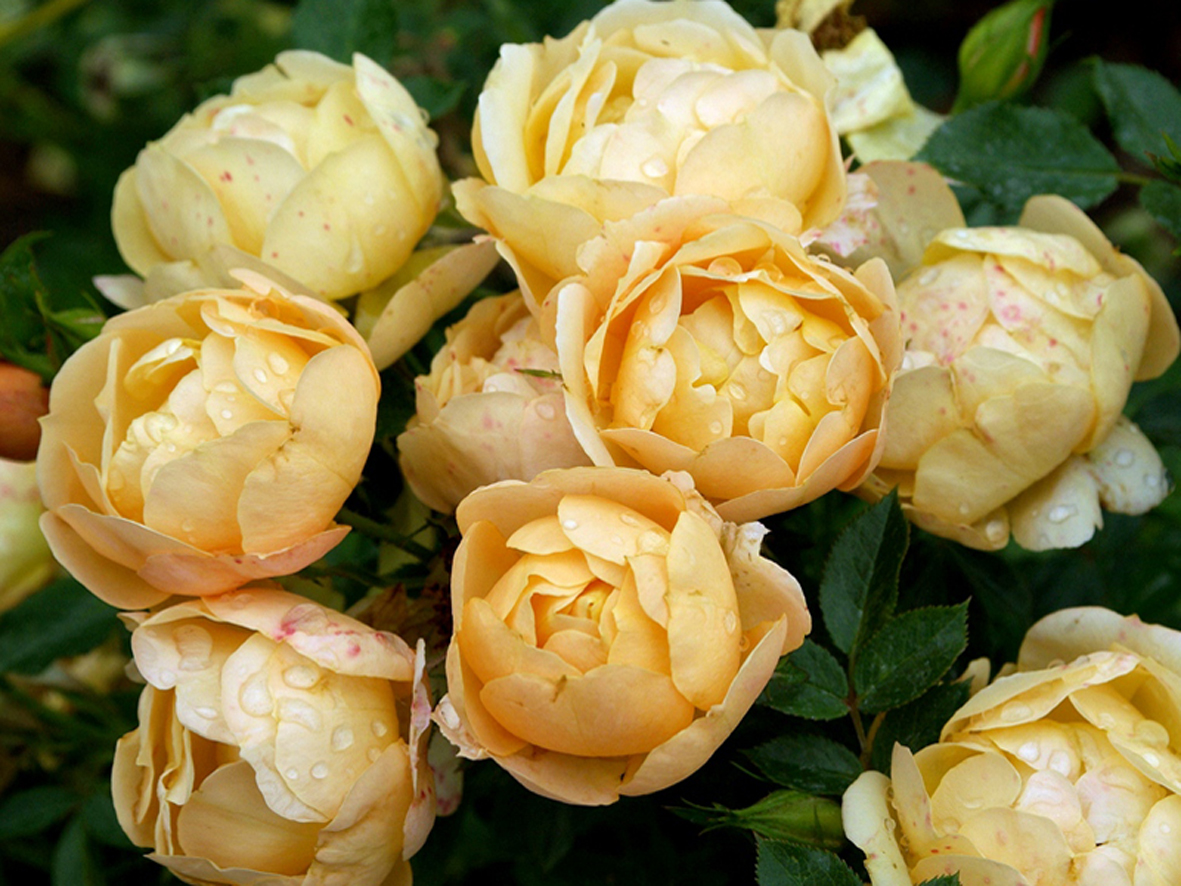
Amber Cover
Juanita
In diameter, the bushes of this creeping rose do not exceed 1 m, the branches are graceful and covered with small leaves of a rich green hue. The flowers are simple, outwardly reminiscent of a dog rose.
The color of the petals is white in the center and dark pink at the edge. Small flowers are collected in inflorescences of 7-10 pieces. Differs in high resistance to disease and lush flowering.

Juanita
Candela
The bush is sprawling, but compact. Shoots tend to the ground as they grow, their height does not exceed 0.7 m. Flowers are yellowish-cream, collected in inflorescences of 5-7 pieces. Leaves are small, dark green. Against the background of dark foliage, bright inflorescences look especially impressive.
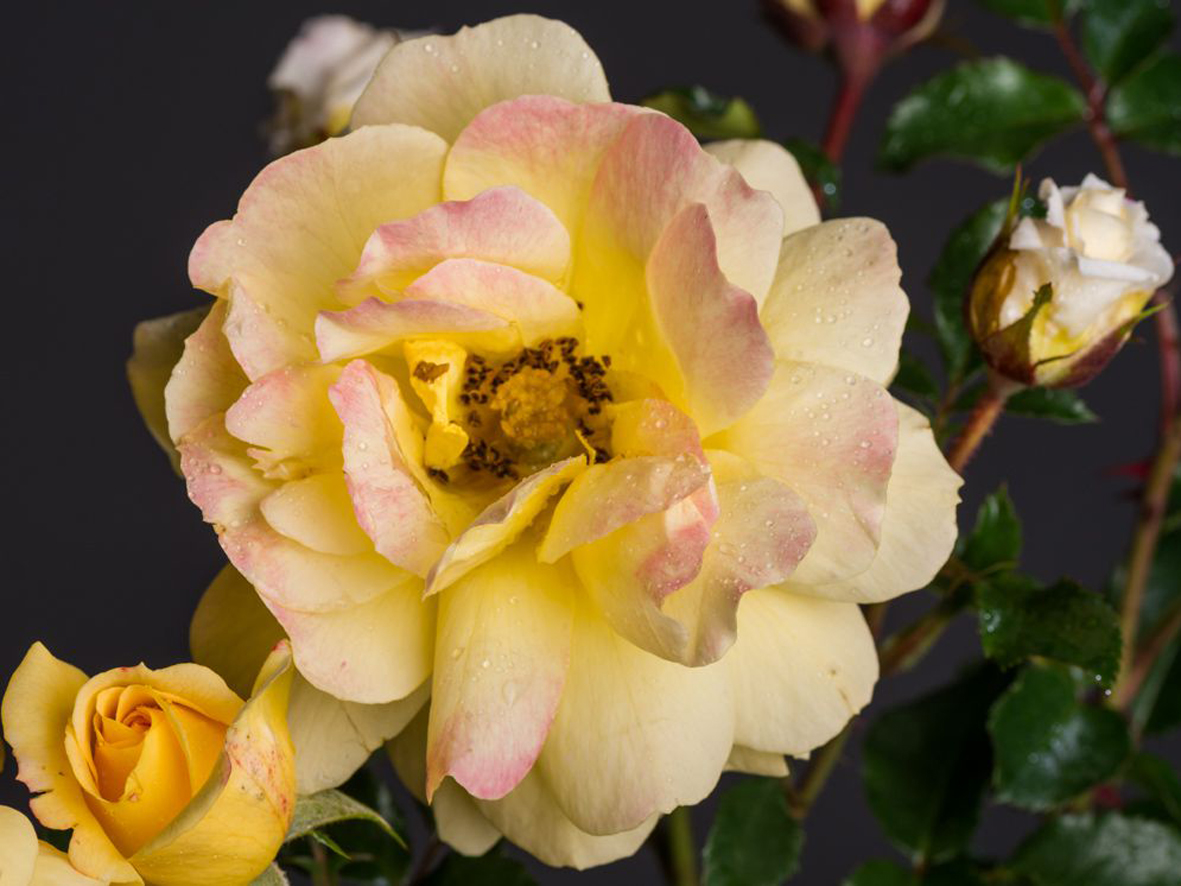
Candela
Diamond
One of the most compact varieties, the height and diameter vary between 40-60 cm. The branches are thin, covered with small leaves. The flowers are quite large, can reach 5-6 cm in diameter. The inflorescences are dense and formed from 6-8 fragrant flowers.
During flowering, the plant forms a green carpet, against which the inflorescences look like glowing spots. Most likely, this is where the name of the variety came from, because the snow-white flowers sparkle like real diamonds.

Diamond
Magik Cover
The compact shrub consists of thin, graceful shoots covered with long and slightly curved thorns. The leaves are small, dark green and slightly glossy.
The flowers are semi-double, they consist of 10-15 petals, painted in bright red. Inflorescences are large clusters of 8-10 flowers.

Magik Cover
How to choose the right variety
Half of the success in growing roses is choosing the right variety. The selection should be carried out, focusing on several parameters, namely:
- Duration of flowering.
- Winter hardiness.
- Climate adaptability.
Based on these parameters, it is possible to divide all popular varieties into 3 main groups, in each of which anyone can choose the best option.
The table shows the varieties selected taking into account each parameter.
| Long bloom |
|
| High winter hardiness |
|
| Adaptation to the climate of the Moscow region |
|
Landing in open ground
You can plant ground cover roses in both spring and autumn. The exact terms directly depend on the climatic conditions of the region. When choosing the time in spring, it is worth looking at the threat of frost - it should have already passed by that moment. In autumn, you should focus on the time that remains before the onset of frost - during this period, the seedling must have time to take root.
The place for planting should be chosen taking into account the fact that ground cover roses do not tolerate strong shading, but also suffer from direct sunlight. The best option would be an area that is well lit throughout the day, but at the very peak of solar activity, at noon, it is slightly shaded. It is in such light conditions that the rose will actively build up its vegetative mass and bloom luxuriantly.
Site preparation and landing technology
Before proceeding directly to planting seedlings in the ground, the site must be prepared. It should be dug up in the fall and brought in rotted manure for digging, and in the spring it should be filled with complex mineral fertilizer. Thus, the soil will be saturated with nutrients and this reserve will be enough for the first few years of seedling growth.
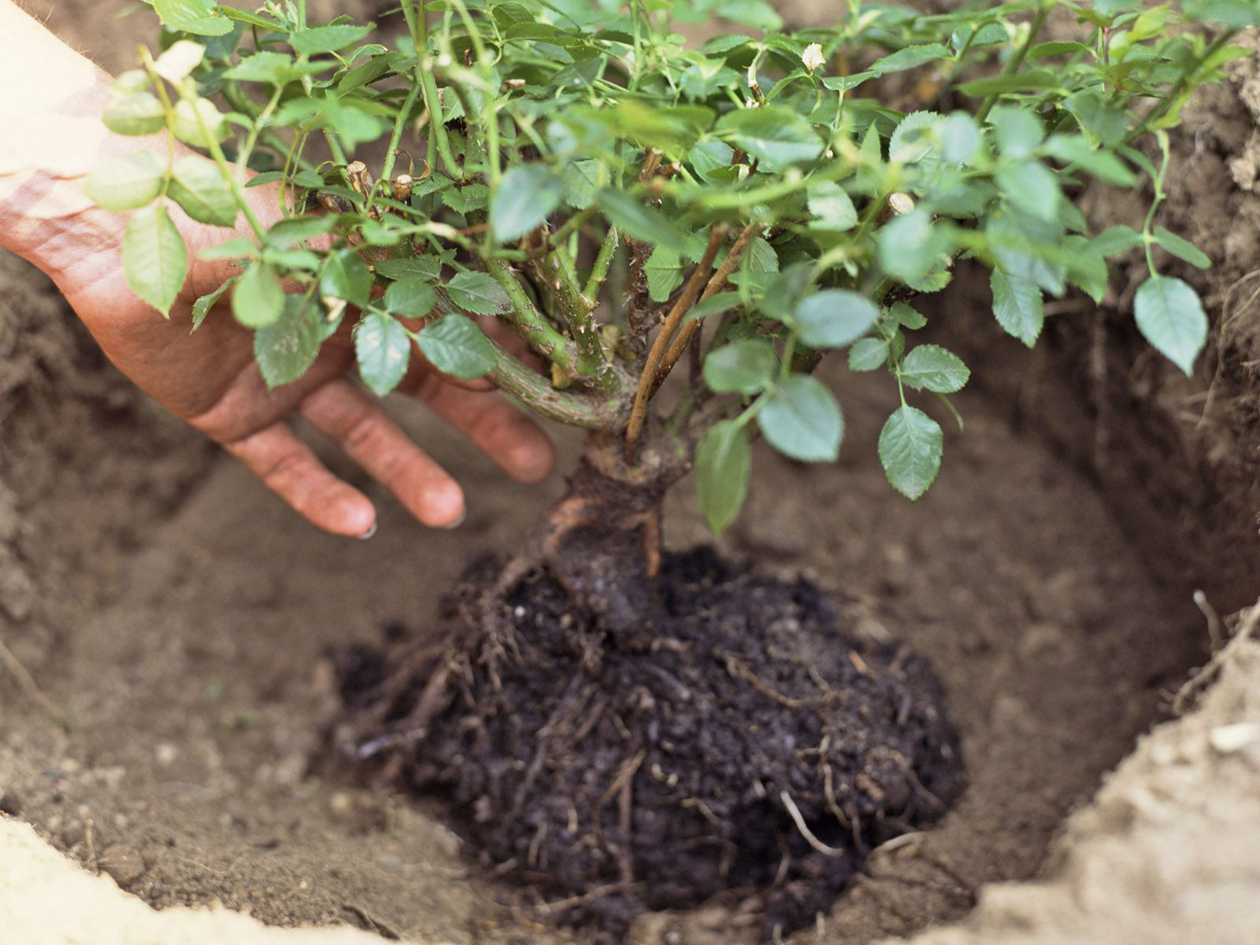
The rules for planting roses require strict adherence
The disembarkation process is performed step by step as follows:
- The seedling is carefully examined, too long and diseased lashes are cut off, dry and damaged roots are cut out.
- A planting pit is prepared, the diameter of which should exceed the volume of the root system by 3-4 cm.
- A layer of earthen mixture is poured at the bottom of the recess, which consists of garden soil, manure and mineral fertilizers. If the site was filled with fertilizers in spring and autumn, then the soil can be used without additives.
- The seedling is placed in a planting pit, the roots are carefully spread and watered.
- Fill the recess to the top with soil and re-irrigate.
- Mulch the surface around the plant with peat.
Care features
Ground cover varieties of roses are very unpretentious and easy to care for. It is enough to follow just a few rules of agricultural technology and the flowers will be rewarded with lush and long flowering. Mandatory events include:
- watering as the soil dries up by 5-6 cm;
- applying dressings in spring, at the beginning of flowering and in autumn;
- loosening or regular mulching of plantings.
It is very important to apply suitable fertilizers at different periods of flower growth. In the spring, it is preferable to apply nitrogen fertilization, before flowering - potash and phosphorus, and in the fall - a complex mineral fertilizer.
With autumn feeding, nitrogen should be completely eliminated - this will cause unwanted shoot growth, which will negatively affect the wintering of plants. It is best to prepare a special form for scheduling feeding in order to keep this issue under constant control.
To improve the quality of the soil, planting must be mulched. This not only helps to retain moisture, but also improves the looseness and breathability of the soil.
Pruning and replanting
It is also necessary to carry out sanitary pruning of plants several times per season, removing damaged and diseased shoots. In autumn, the longest lashes are shortened by 1/3 of the length for the convenience of sheltering plants before the onset of cold weather. Cuttings can be cut from the remnants after pruning - this type of roses is very easy to propagate by cuttings. It is better to do this in spring - this way the seedlings will have time to take root in the season. Reproduction by layering is no less simple.
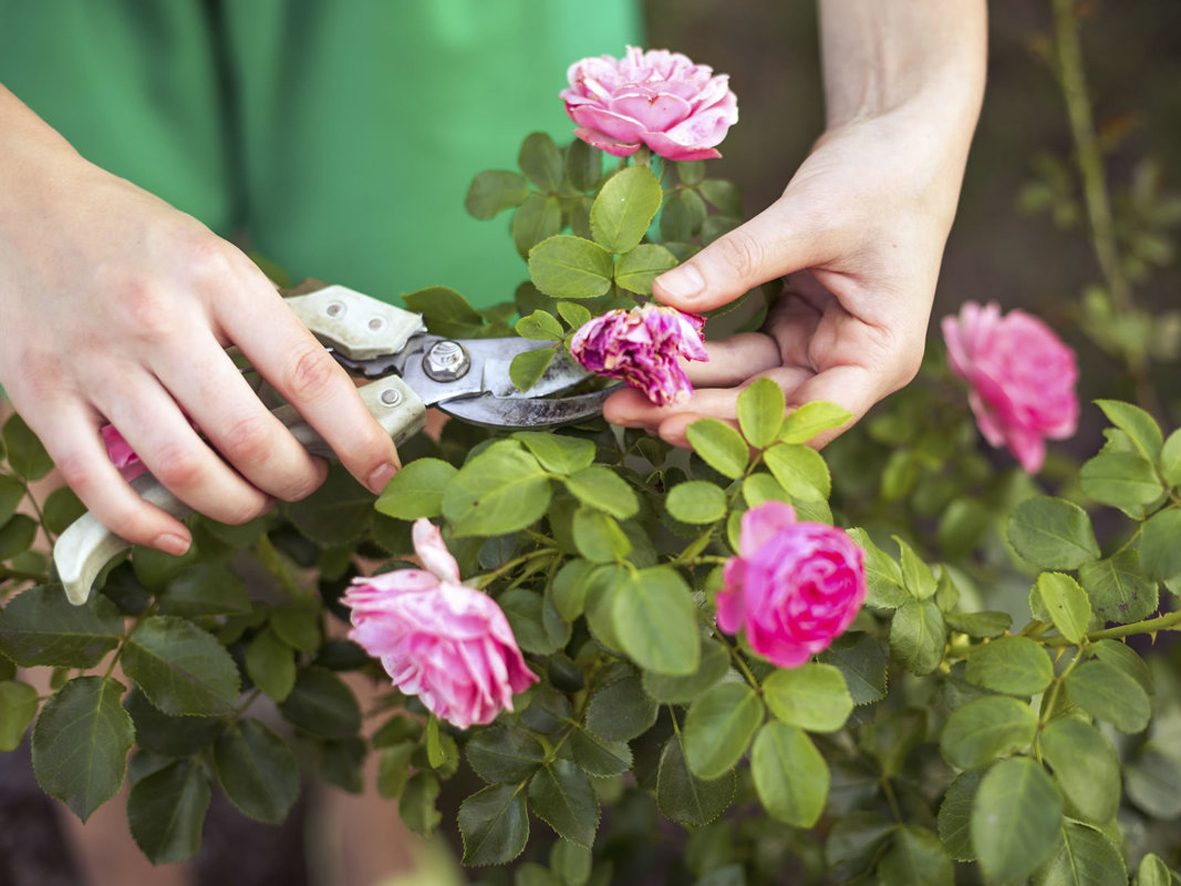
Withered flowers should be removed regularly
Transplanting ground cover roses in adulthood is undesirable. The plant takes a long time to take root and, moreover, it is very inconvenient. If there is such a need, then it is necessary to shorten all the shoots, cut out the damaged lashes, and only then plant the plant in a new place.
Shelter for the winter
We should also pay special attention to preparation for wintering. Some frost-resistant varieties, especially undersized ones, can do without shelter in winter. Higher varieties are sensitive to cold temperatures, so it is better to cover them. You can do this by installing a frame over the plant, on which a non-woven material should be stretched or coniferous spruce branches should be wound. You can also build a shelter from available tools, such as a bucket or box.
Diseases and pests
Most varieties of ground cover roses are resistant to both diseases and pest attacks, but it is still desirable to carry out preventive spraying. Before flowering, the bushes should be treated with a fungicide, and for pest prevention - with an insecticide. Between spraying, an interval of at least 30 days should be maintained, or they should be carried out in different seasons: the first in spring, and the second in autumn.
A real find for flower growers is a ground cover rose, the cultivation and care of which requires minimal effort. The creeping rose is distinguished by a long flowering period and a delicate aroma of inflorescences. Some very hardy varieties can be grown even in harsh climates. Observing a few simple rules of care, you can achieve a lush blooming of roses in a summer cottage or in a flower garden near the house.
